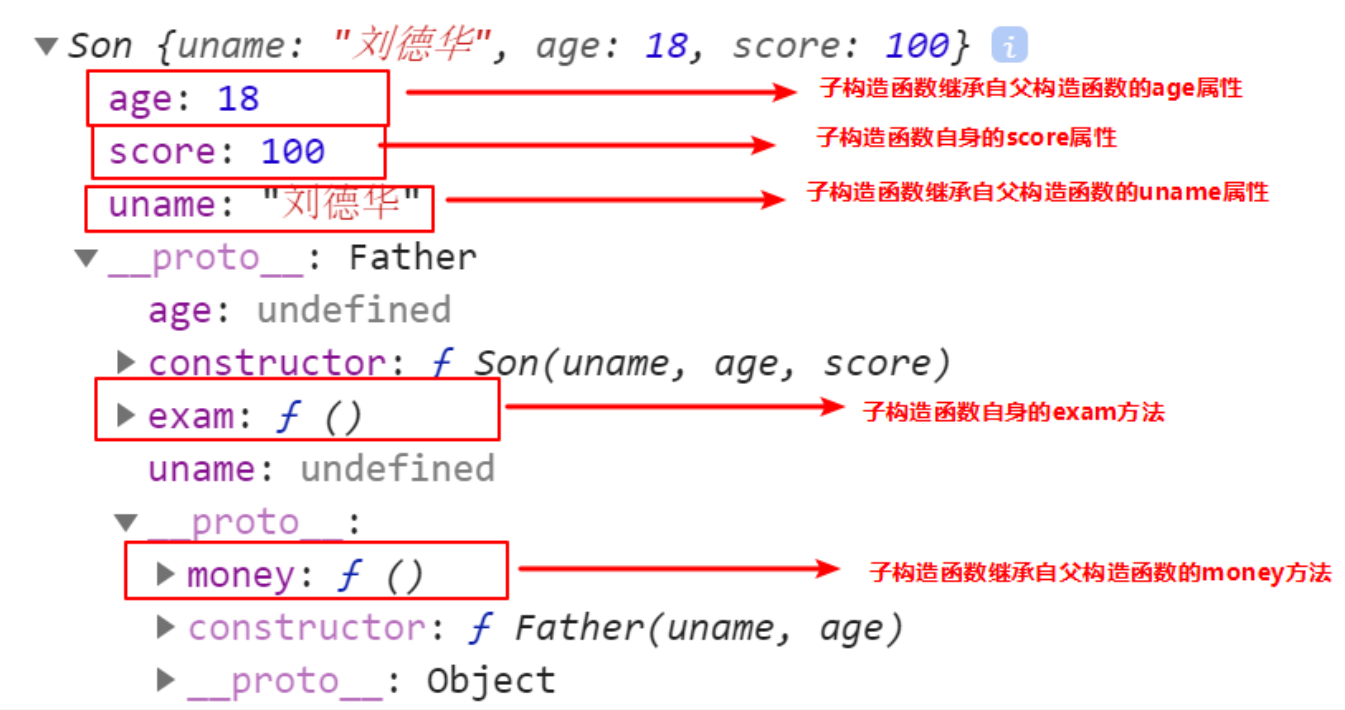一.介绍call()
- call()可以调用函数
- call()可以修改this的指向,使用call()的时候 参数一是修改后的this指向,参数2,参数3..使用逗号隔开连接。

1.1 子构造函数继承父构造函数中的属性
1. 先定义一个父构造函数
2. 再定义一个子构造函数
3. 子构造函数继承父构造函数的属性(使用call方法)
// 1. 父构造函数
function Father(uname, age) {
// this 指向父构造函数的对象实例
this.uname = uname;
this.age = age;
}
// 2 .子构造函数
function Son(uname, age, score) {
// this 指向子构造函数的对象实例
3.使用call方式实现子继承父的属性
Father.call(this, uname, age);
this.score = score;
}
var son = new Son('刘德华', 18, 100);
console.log(son);

2.2借用原型对象继承方法
1. 先定义一个父构造函数
2. 再定义一个子构造函数
3. 子构造函数继承父构造函数的属性(使用call方法)
// 1. 父构造函数
function Father(uname, age) {
// this 指向父构造函数的对象实例
this.uname = uname;
this.age = age;
}
Father.prototype.money = function() {
console.log(100000);
};
// 2 .子构造函数
function Son(uname, age, score) {
// this 指向子构造函数的对象实例
Father.call(this, uname, age);
this.score = score;
}
// Son.prototype = Father.prototype; 这样直接赋值会有问题,如果修改了子原型对象,父原型对象也会跟着一起变化
Son.prototype = new Father();
// 如果利用对象的形式修改了原型对象,别忘了利用constructor 指回原来的构造函数
Son.prototype.constructor = Son;
// 这个是子构造函数专门的方法
Son.prototype.exam = function() {
console.log('孩子要考试');
}
var son = new Son('刘德华', 18, 100);
console.log(son);
